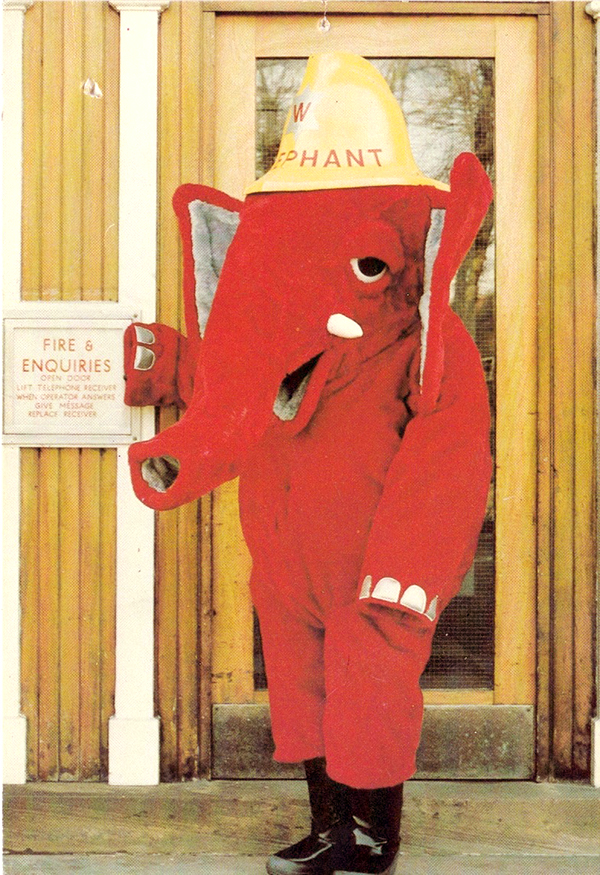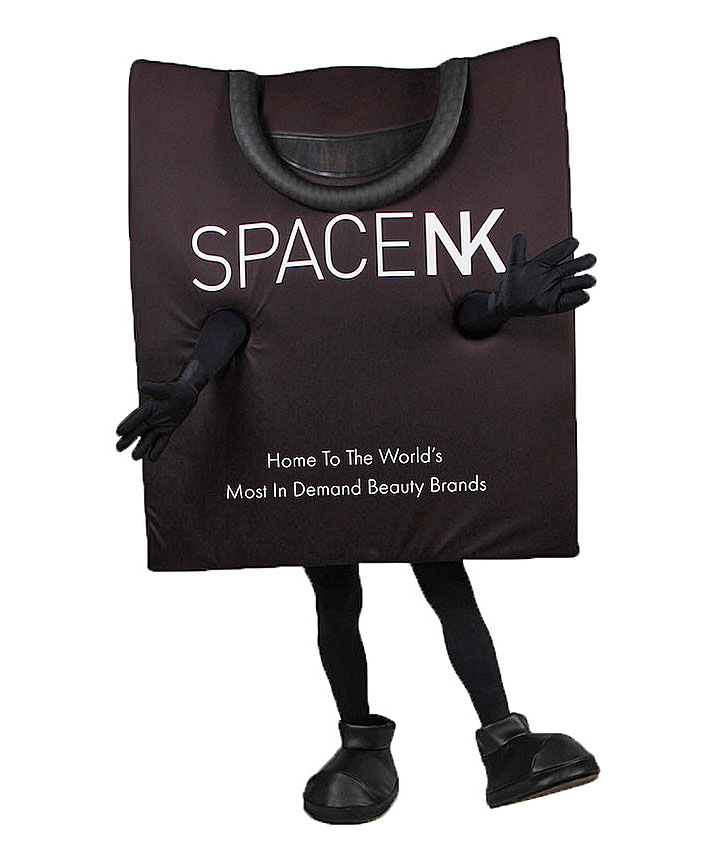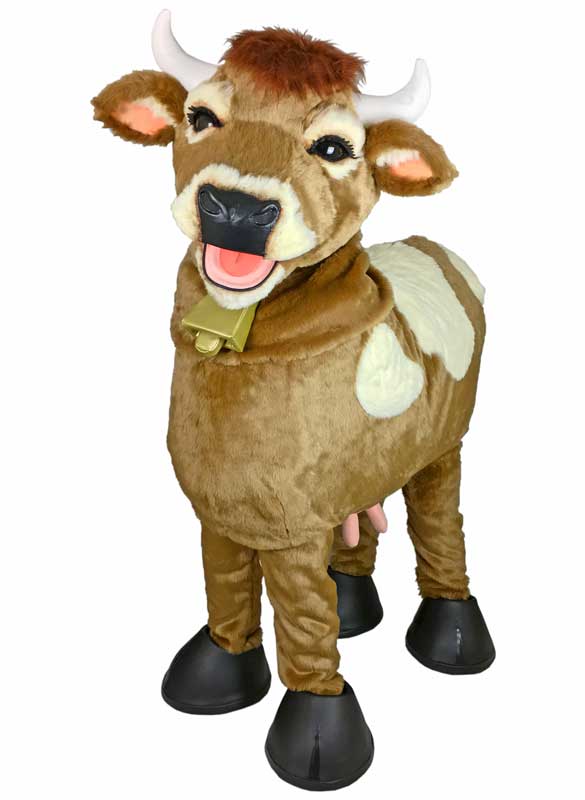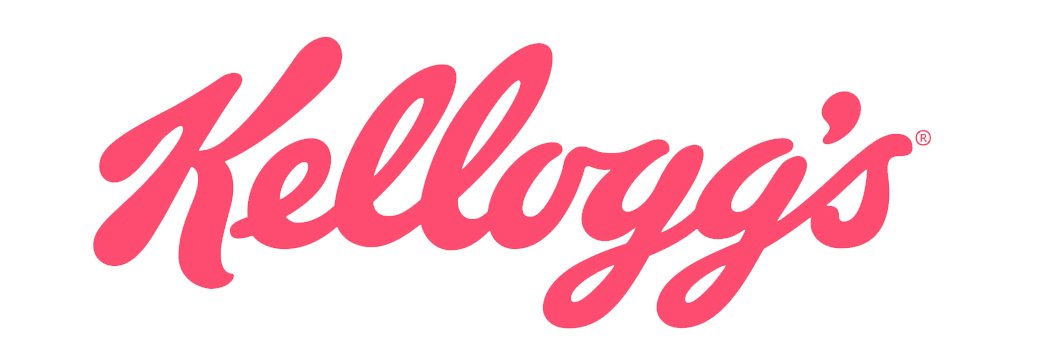
Participating in a marathon for many of us, is a superhuman feat. Over 26 miles of relentless running and jogging, or in many cases, walking and limping to complete a course designed to challenge even the hardiest of runners. Dedication, hard work and determination are required to complete the course, not to mention the mental strength to push beyond the ‘wall’ and keep those legs pounding the pavement to success.
For the most part, marathon runners can be categorised into three groups: The super-fit people that do it for kicks, jostling for position on the PB (personal best) leader board of their local running club or on the latest fitness App. There are those looking to better themselves physically, using the marathon as a goal to work up to, giving their training a purpose with a goal to achieve and then there are those selfless individuals who do it to raise money and awareness for charities across the country (and the world), raising millions of pounds each year for many a good cause. Regardless of what group you fit into, the notion of increasing the challenge to include the additional layers that a costume can add seems crazy and yet there is no better way to get noticed out on the course. With the Greater Manchester and London marathons just around the corner, we thought we’d explore some of the considerations behind wearing a costume on race day.
Firstly, you will be running for a long time. Most mascot manufacturers will tell you that  the maximum recommended time to wear a typical mascot costume without a break is approximately 30-45 minutes or shorter for more energetic performances. This helps prevent dehydration, overheating and general discomfort to the performer. Additional considerations to the character design should be made when running a long distance to ensure the safety of the competitor inside the costume. A costume suitable for running should adhere to the following points:
the maximum recommended time to wear a typical mascot costume without a break is approximately 30-45 minutes or shorter for more energetic performances. This helps prevent dehydration, overheating and general discomfort to the performer. Additional considerations to the character design should be made when running a long distance to ensure the safety of the competitor inside the costume. A costume suitable for running should adhere to the following points:
- Lightweight
- Well ventilated
- Comfortable
- Flexible and well fitted (Skin characters)
- End above the Knee (Inanimate characters)
Running in a costume that does not address these simple points can be uncomfortable and ultimately unsafe; risking dehydration, fatigue and an endless amount of chafing for the person unlucky enough to wear it. The average time for completing a marathon (elites aside) is around the 4-hour mark so you can see why the well-being of the runner is paramount in all decisions regarding the manufacture of the costume.
 From a makers’ perspective, there are a few additional considerations that can be made to assist in the comfort and safety of the runner. Amendments to a costume design to include additional vent holes throughout the character head, or open spacing where there would normally be a gauze layer (such as the mouth) all help to increase air circulation around the runner. We’ve even changed designs so that the head of the runner is visible if that is their preference.
From a makers’ perspective, there are a few additional considerations that can be made to assist in the comfort and safety of the runner. Amendments to a costume design to include additional vent holes throughout the character head, or open spacing where there would normally be a gauze layer (such as the mouth) all help to increase air circulation around the runner. We’ve even changed designs so that the head of the runner is visible if that is their preference.
Character feet are usually oversized and generally difficult to run long distances in. Spat style shoe covers in the style of your character can be made to go over running trainers, allowing you to compete without the concern of stumbling over or tripping up other competitors amongst other podiatric concerns.
Meryl lycra (or CoolMax) material can be used in place of heavy, warmer mat erials like fleece or foam to keep the runner cool. Meryl lycra has moisture wicking properties and draws sweat away from the body to the outside of the material where it disperses into the air. This type of fabric is typically found in sportswear so is perfect for active costumes and a great choice for those running a marathon.
erials like fleece or foam to keep the runner cool. Meryl lycra has moisture wicking properties and draws sweat away from the body to the outside of the material where it disperses into the air. This type of fabric is typically found in sportswear so is perfect for active costumes and a great choice for those running a marathon.
So now you’ve got a costume that fits correctly, is well ventilated and lightweight, what next? It would take someone very special to just go out there and run a marathon without any prior preparation, especially in a costume, so let’s have a look at the build-up to race day and what you should do to get yourself ready for the big event.
Pre-race training
 You should start your training well in advance of the event and build up towards running a longer distance each month. It’s not recommended that you run a full 26 miles in your training. There’s something quite unique about running with like-minded people in an exciting atmosphere that can’t be replicated in training and you’ll find the miles fly by at the event. Running 26.2 miles is difficult for your body to recover from and can have a negative effect on your training efforts so keep this for race day. Ensure that you run shorter distances regularly and you’ll see much more benefit.
You should start your training well in advance of the event and build up towards running a longer distance each month. It’s not recommended that you run a full 26 miles in your training. There’s something quite unique about running with like-minded people in an exciting atmosphere that can’t be replicated in training and you’ll find the miles fly by at the event. Running 26.2 miles is difficult for your body to recover from and can have a negative effect on your training efforts so keep this for race day. Ensure that you run shorter distances regularly and you’ll see much more benefit.
Training to run as a costumed character will require some additional efforts to guarantee you have a safe race and the aim is to be prepared and to manage the expectations of what you can achieve in costume. No one is expecting you to smash your PB but they are expecting you to have fun and make it round the course in one piece. Here’s some advice to help you prepare for the challenge ahead.
Firstly, knowing a little about your character is essential. Turning up on the day to find out the costume is too big or too heavy is going to scupper your chances of completing the course. If you are planning to use your own costume then buy it as soon as you can. If it is a costume for a charity or company then speak to them and try to get access to the costume early. Sometimes this may not be possible due to prior engagements and if this is the case, get some details that will help you prepare. Size, weight and material are all important questions in your quest for preparedness and answers you should be able to get relatively easily. If you can get access to the costume then put it on and take it out for a short run to ensure that it feels comfortable and secure. Wearing it before the event will allow you to iron out any issues before it’s too late, such as ventilation and how hot it will get. Once you have an idea of how the costume feels to run in and have addressed any issues, you can then put it to one side until the actual event so as not to cause any damage or unnecessary wear and tear.
 Now you have an idea of how it feels to run as your character, you can start to adjust your training routine accordingly. Running with a backpack and gradually working up to the equivalent weight of your costume is a great way to prepare your body for the additional layers, allowing you to feel the difference that a few extra kilograms can add without the need to wear the costume and risk damaging it. This gives your body chance to adjust to the added strain and will make race day a much more pleasant experience. Remember not to push too hard and that completing a marathon in training is counterproductive to the end goal.
Now you have an idea of how it feels to run as your character, you can start to adjust your training routine accordingly. Running with a backpack and gradually working up to the equivalent weight of your costume is a great way to prepare your body for the additional layers, allowing you to feel the difference that a few extra kilograms can add without the need to wear the costume and risk damaging it. This gives your body chance to adjust to the added strain and will make race day a much more pleasant experience. Remember not to push too hard and that completing a marathon in training is counterproductive to the end goal.
Another great tip is to train in warmer clothing. Most costumes will add layers and layers equal additional heat. Training in a thick jumper for example will allow your body to become accustomed to the raised temperature that you would expect to feel inside a costumed character. Fluids will vanish rapidly with the additional heat so get used to drinking plenty of water. A camel pack will ensure you have access to fluids throughout the race. This is especially important if your costume covers your face and makes it difficult to drink from a bottle or cup.
Race day
Hopefully by this point you’ve been training hard and are now as prepared as you can be for the gruelling run ahead. You’re on the start line and ready to set off down the course, dressed to the nine’s in a local charity’s cat costume and you’re raring to get the race underway. With most the hard work over, all you have to do now is complete the course and you’ll be a local hero. However, completing the course is easier said than done, especially wearing a mascot costume. Sure enough, the crowds and atmosphere will pull you along for some of the way but there are a few key pointers that will help get you to the finish line.
 Firstly, start nearer to the back of the pack than you would do out of costume. At the back is where the slower competitors start but it’s also where a lot of the atmosphere is created. Serious runners will block out the crowds and strive to finish in as fast a time as possible. Your aim shouldn’t be that when dressed up. It should be about creating awareness for your chosen charity or brand, participating with the crowds and other competitors to give them a ‘show’ on the way round. Pace yourself correctly and you will achieve a respectable time but if your aim is to beat your PB then perhaps running in a costume isn’t for you.
Firstly, start nearer to the back of the pack than you would do out of costume. At the back is where the slower competitors start but it’s also where a lot of the atmosphere is created. Serious runners will block out the crowds and strive to finish in as fast a time as possible. Your aim shouldn’t be that when dressed up. It should be about creating awareness for your chosen charity or brand, participating with the crowds and other competitors to give them a ‘show’ on the way round. Pace yourself correctly and you will achieve a respectable time but if your aim is to beat your PB then perhaps running in a costume isn’t for you.
Being dressed as a character is an open invitation for people to tell you what they think. Be it good or bad, expect comments from people throughout the event and try not to take the negative ones to heart. It takes a certain kind of someone to don a Costume and run 26 miles so much of what you will hear and see should build on an already amazing experience for you and those around you.
As mentioned in the pre-race section, your costume will become hot and you are likely to lose fluids faster than the average ‘naked’ runner. Drinking fluids regularly is paramount to staying safe throughout your run and is worth pointing out again. Short sips rather than big gulps should help to regulate your hydration more effectively and the simple rule is to only drink when you feel thirsty. That way you avoid the issues of both dehydration and over-hydration by listening to your body, which brings us nicely to our next point…
 Play it safe. If you start to feel unwell, or in pain then stop or take a break. There’s nothing more important than your health and if this is being challenged then there is no shame in pulling out. After all, if Paula Radcliffe can stop 22 miles into an Olympic event with an injury, then don’t feel bad about pulling up short of your target if you need to.
Play it safe. If you start to feel unwell, or in pain then stop or take a break. There’s nothing more important than your health and if this is being challenged then there is no shame in pulling out. After all, if Paula Radcliffe can stop 22 miles into an Olympic event with an injury, then don’t feel bad about pulling up short of your target if you need to.
Lastly and most importantly, Enjoy yourself. When you’re out in the middle of the field and you’re getting some well-deserved cheers and applause from the spectators and other runners, that’s the time to really take it all in and seize the day. You’re doing something that not everyone can do so be proud. Take in the atmosphere and you’ll soon find that the miles fly by as you get caught up in the fun. You’re also part of the entertainment and it’s thanks to costumed characters like you that the event is enjoyable for other people to watch.
One more point for race day that I chose to mention last because it’s very important is that Vaseline (or equivalent lube) will become your best friend. Make sure you bring some with you to alleviate the pain of chafe. Not everyone suffers from it but there is no doubt that the addition of a costume increases the likelihood of this phenomenon occurring so plan-ahead and reduce the rub….
Post race
 Now is the time to bask in the glory of your success. You’ve made it to the finish line and hopefully you’ve had a great time getting there. There’s no doubt that you’ll be feeling the strain of the course but the goal you have achieved is something to be very proud of. Take time to rest, take on fluids if you need them and make sure that you warm down thoroughly.
Now is the time to bask in the glory of your success. You’ve made it to the finish line and hopefully you’ve had a great time getting there. There’s no doubt that you’ll be feeling the strain of the course but the goal you have achieved is something to be very proud of. Take time to rest, take on fluids if you need them and make sure that you warm down thoroughly.
After you’ve had chance to recover, now comes the time to sort out your costume. If the costume is your own, follow the washing instructions and make sure you dry it thoroughly in a well-ventilated area. Spread the costume out so that it has chance to air and you’ll reduce the smell that damp can create for future uses. Charities and companies may not expect you to wash the costume as some will send it in for a professional wash and clean after each event, but to keep the costume in good shape make sure it is dry before packing it up again. We’ve seen (and smelt) the effects that damp can cause on a costume and it’s not very nice, especially if it’s you that has to put it on next.
Here at CWC we have plenty of experience in creating characters with running as a consideration and can help with designing the perfect costume for you or your organisation. We also offer a full professional character refurbishment service, so if your character crosses the line and comes back a bit whiffy, you know where to send it for a bit of TLC.
Hopefully this has given you some useful tips for the next or first time you decide to run in a costume. Be it marathon, 10K, 5K or Park Run, entering a character into the event is a fantastic way to raise awareness and become a sure-fire hit with the spectators. If you don’t take yourself too seriously, you will have one of the most entertaining races and who knows, you might even get the bug.
If you’d like advice, or would like to talk to us about creating a costume for your run, we’re only too happy to help.

 Printing – Once you have finalised your design, it will need to be uploaded into the dedicated software on your computer to be processed. RIP software (stands for Raster Image Processing) is effectively an advanced printer driver designed to get optimal results from your machine. From within you can edit the image, resize and format it to the desired profile for your printer. The RIP software stores all the colour profiles required to faithfully recreate the original design. Once your design is ready to print, it is sent by the RIP software to the dedicated printer and is printed out onto special transfer paper. Dye-Sublimation printers can come in a range of sizes. Ours at CWC HQ is just over 1.5m wide, making it useful for a whole range of sublimation tasks.
Printing – Once you have finalised your design, it will need to be uploaded into the dedicated software on your computer to be processed. RIP software (stands for Raster Image Processing) is effectively an advanced printer driver designed to get optimal results from your machine. From within you can edit the image, resize and format it to the desired profile for your printer. The RIP software stores all the colour profiles required to faithfully recreate the original design. Once your design is ready to print, it is sent by the RIP software to the dedicated printer and is printed out onto special transfer paper. Dye-Sublimation printers can come in a range of sizes. Ours at CWC HQ is just over 1.5m wide, making it useful for a whole range of sublimation tasks. The dye sublimation printing process sounds relatively simple, right? In theory at least but in practice, there are several variable factors that can affect the final results. The right heat, time, pressure and humidity are all concerns when striving for the perfect print. Some fabrics sublimate better at higher temperatures, and some at lower. Some fabrics flatten under high pressure, some require more pressure for the ink to embed itself. As you can see it’s a fine balance between all these factors to ensure your print comes out looking its best.
The dye sublimation printing process sounds relatively simple, right? In theory at least but in practice, there are several variable factors that can affect the final results. The right heat, time, pressure and humidity are all concerns when striving for the perfect print. Some fabrics sublimate better at higher temperatures, and some at lower. Some fabrics flatten under high pressure, some require more pressure for the ink to embed itself. As you can see it’s a fine balance between all these factors to ensure your print comes out looking its best.
 the maximum recommended time to wear a typical mascot costume without a break is approximately 30-45 minutes or shorter for more energetic performances. This helps prevent dehydration, overheating and general discomfort to the performer. Additional considerations to the character design should be made when running a long distance to ensure the safety of the competitor inside the costume. A costume suitable for running should adhere to the following points:
the maximum recommended time to wear a typical mascot costume without a break is approximately 30-45 minutes or shorter for more energetic performances. This helps prevent dehydration, overheating and general discomfort to the performer. Additional considerations to the character design should be made when running a long distance to ensure the safety of the competitor inside the costume. A costume suitable for running should adhere to the following points: From a makers’ perspective, there are a few additional considerations that can be made to assist in the comfort and safety of the runner. Amendments to a costume design to include additional vent holes throughout the character head, or open spacing where there would normally be a gauze layer (such as the mouth) all help to increase air circulation around the runner. We’ve even changed designs so that the head of the runner is visible if that is their preference.
From a makers’ perspective, there are a few additional considerations that can be made to assist in the comfort and safety of the runner. Amendments to a costume design to include additional vent holes throughout the character head, or open spacing where there would normally be a gauze layer (such as the mouth) all help to increase air circulation around the runner. We’ve even changed designs so that the head of the runner is visible if that is their preference. erials like fleece or foam to keep the runner cool. Meryl lycra has moisture wicking properties and draws sweat away from the body to the outside of the material where it disperses into the air. This type of fabric is typically found in sportswear so is perfect for active costumes and a great choice for those running a marathon.
erials like fleece or foam to keep the runner cool. Meryl lycra has moisture wicking properties and draws sweat away from the body to the outside of the material where it disperses into the air. This type of fabric is typically found in sportswear so is perfect for active costumes and a great choice for those running a marathon. You should start your training well in advance of the event and build up towards running a longer distance each month. It’s not recommended that you run a full 26 miles in your training. There’s something quite unique about running with like-minded people in an exciting atmosphere that can’t be replicated in training and you’ll find the miles fly by at the event. Running 26.2 miles is difficult for your body to recover from and can have a negative effect on your training efforts so keep this for race day. Ensure that you run shorter distances regularly and you’ll see much more benefit.
You should start your training well in advance of the event and build up towards running a longer distance each month. It’s not recommended that you run a full 26 miles in your training. There’s something quite unique about running with like-minded people in an exciting atmosphere that can’t be replicated in training and you’ll find the miles fly by at the event. Running 26.2 miles is difficult for your body to recover from and can have a negative effect on your training efforts so keep this for race day. Ensure that you run shorter distances regularly and you’ll see much more benefit. Now you have an idea of how it feels to run as your character, you can start to adjust your training routine accordingly. Running with a backpack and gradually working up to the equivalent weight of your costume is a great way to prepare your body for the additional layers, allowing you to feel the difference that a few extra kilograms can add without the need to wear the costume and risk damaging it. This gives your body chance to adjust to the added strain and will make race day a much more pleasant experience. Remember not to push too hard and that completing a marathon in training is counterproductive to the end goal.
Now you have an idea of how it feels to run as your character, you can start to adjust your training routine accordingly. Running with a backpack and gradually working up to the equivalent weight of your costume is a great way to prepare your body for the additional layers, allowing you to feel the difference that a few extra kilograms can add without the need to wear the costume and risk damaging it. This gives your body chance to adjust to the added strain and will make race day a much more pleasant experience. Remember not to push too hard and that completing a marathon in training is counterproductive to the end goal. Firstly, start nearer to the back of the pack than you would do out of costume. At the back is where the slower competitors start but it’s also where a lot of the atmosphere is created. Serious runners will block out the crowds and strive to finish in as fast a time as possible. Your aim shouldn’t be that when dressed up. It should be about creating awareness for your chosen charity or brand, participating with the crowds and other competitors to give them a ‘show’ on the way round. Pace yourself correctly and you will achieve a respectable time but if your aim is to beat your PB then perhaps running in a costume isn’t for you.
Firstly, start nearer to the back of the pack than you would do out of costume. At the back is where the slower competitors start but it’s also where a lot of the atmosphere is created. Serious runners will block out the crowds and strive to finish in as fast a time as possible. Your aim shouldn’t be that when dressed up. It should be about creating awareness for your chosen charity or brand, participating with the crowds and other competitors to give them a ‘show’ on the way round. Pace yourself correctly and you will achieve a respectable time but if your aim is to beat your PB then perhaps running in a costume isn’t for you. Play it safe. If you start to feel unwell, or in pain then stop or take a break. There’s nothing more important than your health and if this is being challenged then there is no shame in pulling out. After all, if Paula Radcliffe can stop 22 miles into an Olympic event with an injury, then don’t feel bad about pulling up short of your target if you need to.
Play it safe. If you start to feel unwell, or in pain then stop or take a break. There’s nothing more important than your health and if this is being challenged then there is no shame in pulling out. After all, if Paula Radcliffe can stop 22 miles into an Olympic event with an injury, then don’t feel bad about pulling up short of your target if you need to. Now is the time to bask in the glory of your success. You’ve made it to the finish line and hopefully you’ve had a great time getting there. There’s no doubt that you’ll be feeling the strain of the course but the goal you have achieved is something to be very proud of. Take time to rest, take on fluids if you need them and make sure that you warm down thoroughly.
Now is the time to bask in the glory of your success. You’ve made it to the finish line and hopefully you’ve had a great time getting there. There’s no doubt that you’ll be feeling the strain of the course but the goal you have achieved is something to be very proud of. Take time to rest, take on fluids if you need them and make sure that you warm down thoroughly. hese were the real deal. Lions, tigers, bears, dogs, pigs, horses and birds of prey were all used by sporting clubs and instantly became a popular feature with the audience, who would cackle and hoot at the escapades of the animal and its trainer as they were paraded around the stadium. There was however something missing. That something was a unique identity and a charismatic personality. OK, now I can already hear you all saying (and I agree) that animals do have personalities, but have you ever seen a cat, bear or any other animal react to the cheers of a crowd and respond by ramping up the excitement? The only reaction I have seen is that of shock and running away when my cat is confronted with any loud noise….
hese were the real deal. Lions, tigers, bears, dogs, pigs, horses and birds of prey were all used by sporting clubs and instantly became a popular feature with the audience, who would cackle and hoot at the escapades of the animal and its trainer as they were paraded around the stadium. There was however something missing. That something was a unique identity and a charismatic personality. OK, now I can already hear you all saying (and I agree) that animals do have personalities, but have you ever seen a cat, bear or any other animal react to the cheers of a crowd and respond by ramping up the excitement? The only reaction I have seen is that of shock and running away when my cat is confronted with any loud noise…. So fast forward to the 1960’s and to one of, if not the FIRST costumed character at a MAJOR sporting event; World Cup Willie. Designed by Reg Hoye (who illustrated some of Enid Blyton’s books) for the 1966 World Cup, Willie was the personification of the proud British spirit. The stocky little Lion, sporting a full Union Jack football kit and boots could be seen everywhere during the competition, invoking national pride into the people of England and cheering the lads on from the sidelines. A full range of merchandise was created to compliment the character and the notion of modern day sporting memorabilia was defined. Nowadays, memorabilia has grown to become one of the most important sources of income for a club or competition. The significance of World Cup Willie did not go unnoticed by other countries, who started to realise the potential of such a character and soon even West Germany and the Soviet Union were joining in with the fun. 1966 was the first and last year that England won the World Cup. Whether or not Willie had anything to do with it I’ll let you decide….
So fast forward to the 1960’s and to one of, if not the FIRST costumed character at a MAJOR sporting event; World Cup Willie. Designed by Reg Hoye (who illustrated some of Enid Blyton’s books) for the 1966 World Cup, Willie was the personification of the proud British spirit. The stocky little Lion, sporting a full Union Jack football kit and boots could be seen everywhere during the competition, invoking national pride into the people of England and cheering the lads on from the sidelines. A full range of merchandise was created to compliment the character and the notion of modern day sporting memorabilia was defined. Nowadays, memorabilia has grown to become one of the most important sources of income for a club or competition. The significance of World Cup Willie did not go unnoticed by other countries, who started to realise the potential of such a character and soon even West Germany and the Soviet Union were joining in with the fun. 1966 was the first and last year that England won the World Cup. Whether or not Willie had anything to do with it I’ll let you decide…. 012’s very own Wenlock and Mandeville. Gone are the humanoid shapes that were once the staple mascot style, only to be exchanged with weird and wonderful body types as you see in the 2012 Olympic and Paralympic mascots. Although ultimately criticized for their wacky shapes, Wenlock and Mandeville were a large reason for the success of the London Olympics and brought in millions of pounds of revenue with their merchandise, only being surpassed by the sale of the GB team kit. One disadvantage of this body style is maneuverability and top flight sporting clubs prefer to stick to a humanoid body shape so that their characters can race around the pitch, egging on or poking fun at the crowd, coaches and players alike.
012’s very own Wenlock and Mandeville. Gone are the humanoid shapes that were once the staple mascot style, only to be exchanged with weird and wonderful body types as you see in the 2012 Olympic and Paralympic mascots. Although ultimately criticized for their wacky shapes, Wenlock and Mandeville were a large reason for the success of the London Olympics and brought in millions of pounds of revenue with their merchandise, only being surpassed by the sale of the GB team kit. One disadvantage of this body style is maneuverability and top flight sporting clubs prefer to stick to a humanoid body shape so that their characters can race around the pitch, egging on or poking fun at the crowd, coaches and players alike.



 Alison Dermott. Alison was just a young girl when she first encountered Welephant during a firework safety campaign. Being a talented individual even at that age, Alison shone brighter than the other children and won a colouring competition, resulting in some fantastic prizes and the opportunity for a photo with the iconic elephant. It didn’t stop there, Alison’s mum even wore the costume throughout the nineties in the school that she worked for, using it to teach local children the principles of fire safety. Little did Alison know that when she joined the team at Costumes with Character, Welephant would once again charge into her life.
Alison Dermott. Alison was just a young girl when she first encountered Welephant during a firework safety campaign. Being a talented individual even at that age, Alison shone brighter than the other children and won a colouring competition, resulting in some fantastic prizes and the opportunity for a photo with the iconic elephant. It didn’t stop there, Alison’s mum even wore the costume throughout the nineties in the school that she worked for, using it to teach local children the principles of fire safety. Little did Alison know that when she joined the team at Costumes with Character, Welephant would once again charge into her life.
 “I wanted to take this opportunity to thank you for your ongoing service.
“I wanted to take this opportunity to thank you for your ongoing service. See video
See video

 Each character we have ordered has been of incredible quality and detail and have been well received by everyone who sees them. All of the staff are incredibly helpful and a delight to work with and no doubt we will be using them as often as we can again in the future.”
Each character we have ordered has been of incredible quality and detail and have been well received by everyone who sees them. All of the staff are incredibly helpful and a delight to work with and no doubt we will be using them as often as we can again in the future.”
 View costume
View costume View costume
View costume View costume
View costume View costume
View costume View costume
View costume View costume
View costume View costume
View costume View costume
View costume